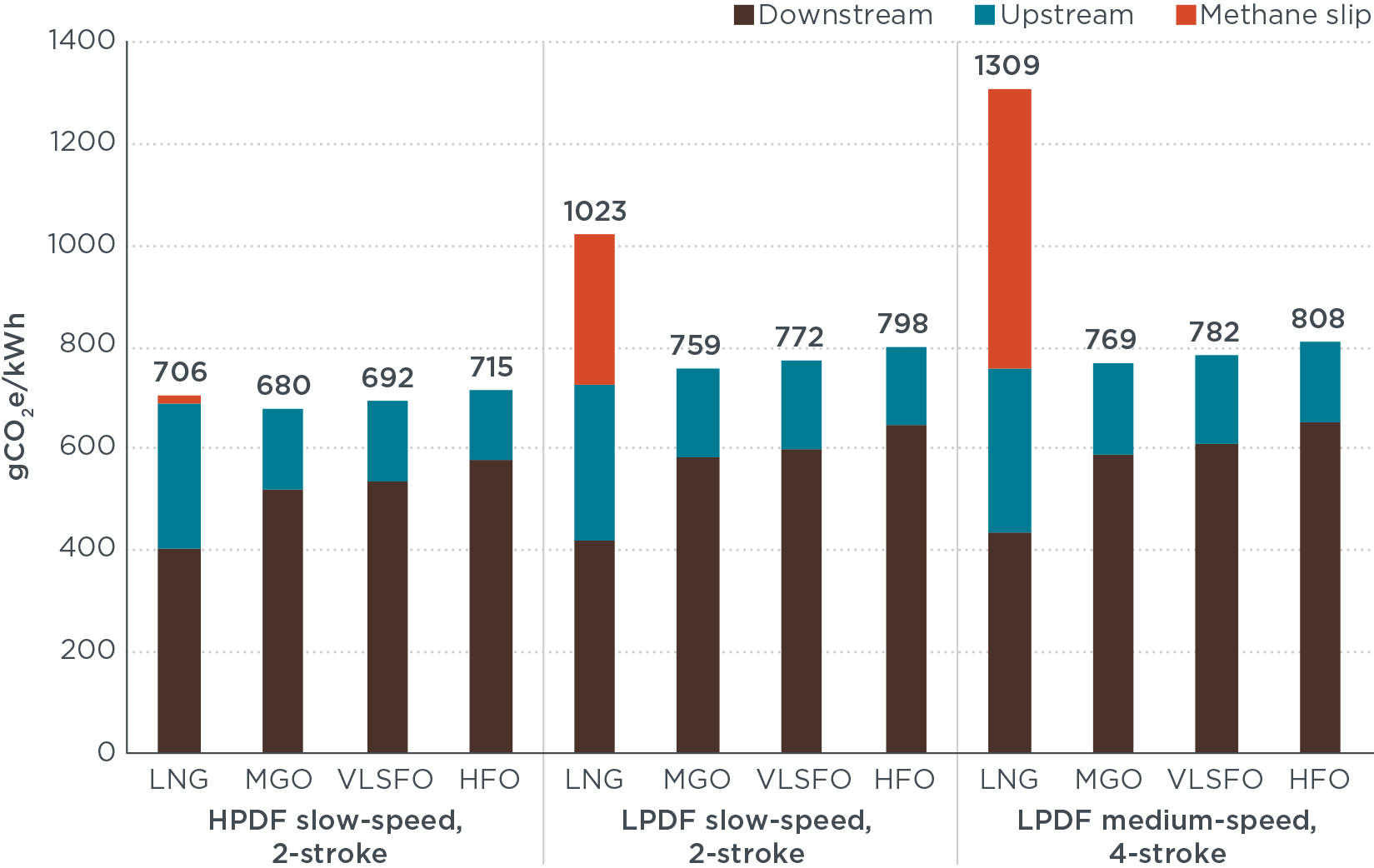ICCT: LNG does not reduce GHG emissions from shipping
28 January 2020
Liquefied natural gas (LNG) is often considered a prospective fuel for marine engines to reduce GHG emissions from international shipping. More and more ships are being built to run on LNG, which emits approximately 25% less CO2 per unit of energy than conventional marine fuels, because methane contains less carbon in the molecule than the hydrocarbons that make up diesel fuel. However, if life-cycle emissions are considered, including methane losses during natural gas extraction and distribution are considered, LNG offers no GHG emission benefit, concluded a new analysis by the International Council on Clean Transportation (ICCT) [4641].
Natural gas is mostly methane, a potent GHG that traps 86 times more heat in the atmosphere than the same amount of CO2 over a 20-year time period. To better understand the full climate impacts of using LNG as a marine fuel, the ICCT study compared the life-cycle GHG emissions from LNG to those of heavy fuel oil (HFO), very low sulfur fuel oil (VLSFO), and marine gas oil (MGO). The life-cycle emissions considered in the study included three components: (1) upstream or “well-to-hull” CH4 and CO2 emissions from the natural gas supply chain (fugitive emissions, venting & flaring); (2) downstream or “hull-to-wake” CO2 emissions from methane combustion, and (3) “methane slip”, defined as emissions of unburned CH4 from the engine.
The study used the 100-year and 20-year global warming potentials (GWP) for methane included in the IPCC’s Fifth Assessment Report [3712]. The respective GWP100 and GWP20 values are 36 and 86, reflecting the fact the lifetime of methane in the atmosphere is only 12.4 years, much shorter than that of CO2.
The GWP20 value should be used whenever policies envision GHG reductions within a few decades, such as the International Maritime Organization’s (IMO) climate goals. Using GWP20 and factoring in higher upstream emissions for all systems and crankcase emissions for low-pressure systems, there is no climate benefit from using LNG, regardless of the engine technology.

(Source: ICCT)
High-pressure injection dual fuel (HPDF) engines using LNG emitted 4% more life-cycle GHG emissions than if they used MGO. The most popular LNG engine technology is low-pressure dual fuel (LPDF), four-stroke, medium-speed, which is used on at least 300 ships; it is especially popular with LNG fueled cruise ships. Results show this technology emitted 70% more life-cycle GHGs when it used LNG instead of MGO and 82% more than using MGO in a comparable medium-speed diesel (MSD) engine.
When GWP100 is used, the maximum life-cycle GHG benefit of LNG is a 15% reduction compared with MGO, and this is only if ships use an HPDF engine and upstream methane emissions are well-controlled. However, the latter might prove difficult as more LNG production shifts to shale gas, and given recent evidence that upstream methane losses could be higher than previously expected. Additionally, only 90 of the more than 750 LNG-fueled ships in service or on order use HPDF engines.
Source: ICCT